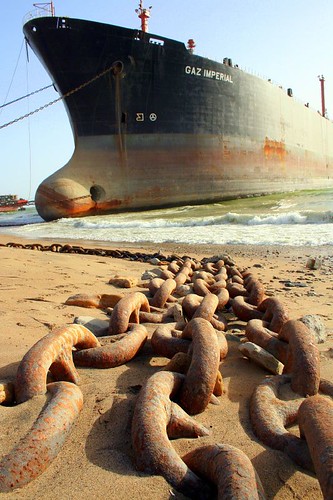

Gadani
ship-breaking yard is the world's third largest ship breaking
yard. The yard consists of 132 ship-breaking plots located across a 10 km
long beachfront
at Gadani,
Pakistan,
about 50 kilometres northwest of Karachi.
In
the 1980s, Gadani was the largest ship-breaking yard in the world, with more
than 30,000 direct employees. However, competition from newer facilities in Alang, India and Chittagong,
Bangladesh
resulted in a significant reduction in output, with Gadani, today, producing
less than one fifth of the scrap it produced in the 1980s. The recent reduction
in taxes on scrap metal has led to a modest resurgence of output at Gadani,
which now employs around 6,000 workers.
Gadani
currently has an annual capacity of breaking up to 125 ships of all sizes,
including supertankers, with a combined LDT of 1,000,000
tons.
Although
Gadani ranks as the world's third largest ship breaking yard after Alang and
Chittagong in terms of volume, it is the world's leading ship breaking yard in
terms of efficiency. At Gadani, a ship with 5,000 LDT is broken within 30 to 45
days, whereas in India and Bangladesh, it takes, on average, more than six
months for breaking a vessel of the same size.

Ships
to be broken up are run aground on the beach under their own power,
then gradually dismantled. As the weight of the ship lessens, it is dragged
further onto the beach until completely scrapped.
History
Informal
ship-breaking operations occurred along the Gadani coastline prior to
Pakistan's independence in 1947. After independence, a group of entrepreneurs
made serious efforts to develop this casual trade into a regular industry.
Despite their efforts, Gadani beach at that time lacked necessary
infrastructure facilities including roads, utilities or accommodation or
medical services for workers.
1969
to 1983 is considered to be the golden period of the ship-breaking industry. In
the 1980s, the Gadani ship breaking industry provided employment to over 30,000
workers directly, while over half a million people earned their living
indirectly, through trade and industries which used ship scrap as raw material.
It was described as the largest such yard in the world.
No comments:
Post a Comment